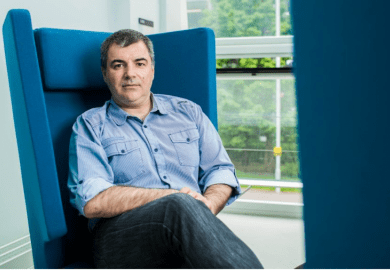Despite its title, The Void is not a science fiction adventure but a journey through many of the fundamental ideas of modern physics. It centres on efforts to understand the nature of the vacuum (the void of the title), starting from the reflections of the Greek philosophers, continuing to the two great revolutionary breakthroughs of 20th-century physics, relativity and quantum mechanics, and finally to the theoretical ideas of the Higgs field as the origin of mass and the rapid inflation of the universe as the explanation of its uniformity. It may seem surprising that so much can be said about "nothing", but The Void teaches us that attempts to understand the vacuum have been central to the development of new concepts in physics.
The Void is primarily an introduction to many of the beautiful concepts of physics - a beauty that scientists often find difficult to share with the wider community. Thus, for example, we see how the laws of electricity and magnetism were found to imply the existence of electromagnetic radiation such as light and radio waves. This in turn raised the question of what is the medium in which the waves propagate, or "Waves in what" as the title of chapter four asks, leading to the unsuccessful search for the ether and the development of the special theory of relativity.
The author then holds the reader's hand as he introduces Einstein's theory of gravity (general theory of relativity) with its curved space-time, and quantum mechanics with the uncertainty principle and the constant creation and annihilation of particle-antiparticle pairs in the vacuum.
The impressive successes of these two theories, general relativity on astronomical and cosmological length scales and quantum mechanics on atomic and subatomic scales, leads to the major challenge of current theoretical physics: how to combine these successes into a consistent theory of quantum gravity. Not surprisingly, attempts to achieve this by, for example, constructing string theories or other theories with extra dimensions of space-time, represent a major activity in physics research. Whether we are going back to the methods of the Greek philosophers or whether the theories will be amenable to experimental verification, or even contradiction, remains to be seen.
The chapter on the Higgs vacuum is particularly topical. In the coming months, a large proportion of the world's particle physicists will begin taking data at the Large Hadron Collider at the Cern particle physics laboratory near Geneva. A key goal of the experiments will be to search for the Higgs boson, and hence to confirm the generally accepted picture of the origin of mass or, failing this, to point us towards the correct mechanism of mass generation. The Higgs boson remains the missing ingredient of the remarkably successful standard model of particle physics that describes interactions between the sub-nuclear elementary particles to an impressive precision, and The Void provides an introduction to the underlying concepts. It is nice to think that the explanations may help the physics community share its extraordinary excitement and anticipation with others.
Close's book underlines the fascinating interplay between two apparently very different areas of physics, cosmology and particle physics.
Most extensions of the standard model have typical length scales that are so small that they could only be probed directly with energies that are very much larger than those available in particle accelerators. Such huge energies were, however, available in the first tiny fraction of a second after the big bang, and so the evolution of the universe is intimately linked to high-energy particle physics. Thus cosmological observations constrain possible extensions of the standard model of particle physics and, in turn, new ideas in particle physics can provide input into cosmological models.
After reading The Void, readers will no doubt be left with many unanswered questions that may inspire them to undertake further reading, to attend lectures or to browse through scientific material available on the web. Some of the most interesting questions, however, still have no answer, and physicists will be working fervently to try and put this right. The story will be continued.
The Void
By Frank Close
Oxford University Press
176pp
£9.99
ISBN 9780199225903
Published 25 October 2007
Register to continue
Why register?
- Registration is free and only takes a moment
- Once registered, you can read 3 articles a month
- Sign up for our newsletter
Subscribe
Or subscribe for unlimited access to:
- Unlimited access to news, views, insights & reviews
- Digital editions
- Digital access to THE’s university and college rankings analysis
Already registered or a current subscriber?



